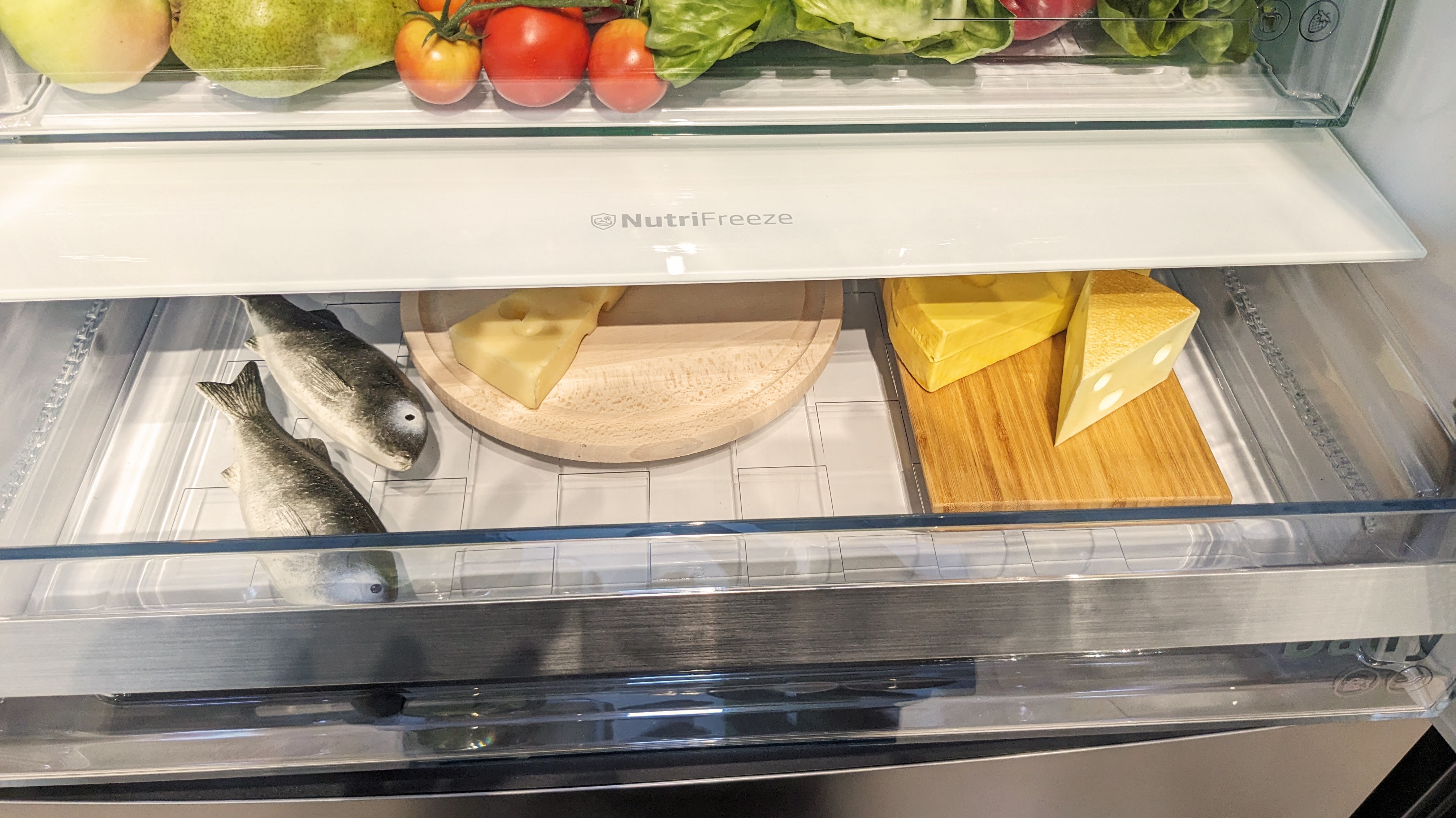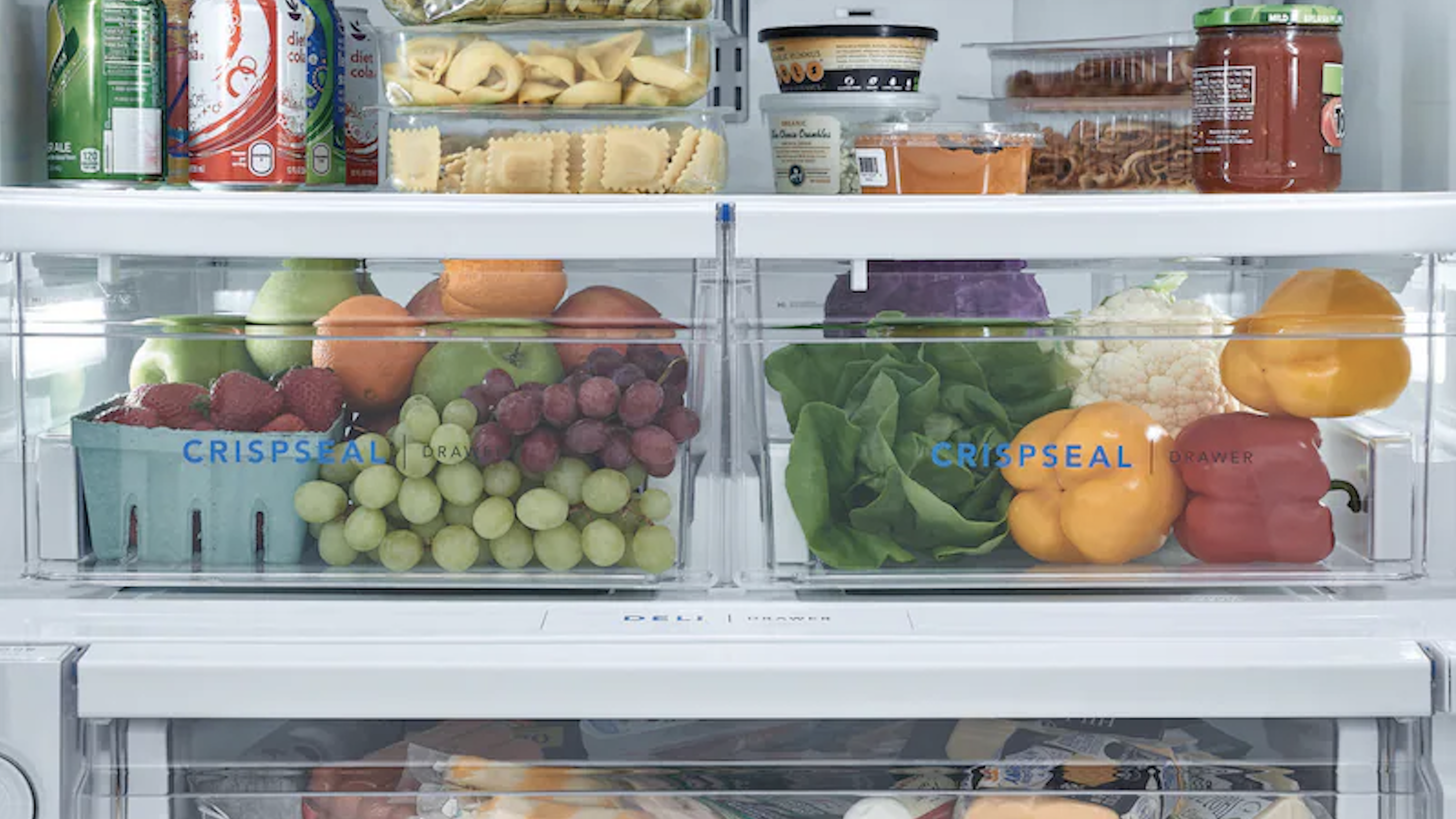Why is my refrigerator not cooling? 7 reasons with expert advice
It might be an easy fix

Have you got an issue with your fridge not cooling properly? Maybe your milk isn't as chilled as you would like, or you've had to throw away moldy food before the best-before date? We rely on our fridges on a day-to-day basis for keeping our food continuously chilled and safe to eat. So not only is it beneficial for your household to fix any cooling issues, but it will also reduce food waste and bills.
Just because your fridge isn’t cooling properly, it doesn’t mean that you automatically need to purchase a new one, or even that you need to call a technician out. Even the best French door refrigerators and the best side-by-side refrigerators can have problems every now and again, and there are several possible causes of fridges not cooling properly, and many of them can be solved at home, with a few simple steps.
Here is everything you need to know as to why your fridge may not be cooling properly, and what you can do about it. We caught up with appliance expert Samantha Odo from PreCondo for the full lowdown.

Samantha Odo is a seasoned real estate sales representative at PreCondo and brings over a decade of invaluable experience to the industry. Her expertise extends beyond traditional real estate knowledge, encompassing a deep understanding of home and living dynamics, including proficiency in appliances and interior design.
Why is my refrigerator not cooling? And how to fix it
There are a few simple ways to identify the what the problem might be. And before calling out a technician or considering a new purchase, there might be an easy fix you can do yourself.
1. Check the power (and thermostat)
Sometimes, refrigerators will need just a simple reboot to be up and running again, as most modern fridges operate electromechanically. You can do this by unplugging for a few minutes then plugging it back in, or your fridge may have a reset button that works to the same effect.
Does your fridge definitely have power? If the interior light doesn't turn on when you open it, chances are that the fridge is receiving insufficient/no power. Check the mains connection and your fuse box to see if there's an easy fix.
Then, double check that the thermostat is set to a low temperature. Samantha explains that this is easily overlooked: "it might sound obvious, but sometimes the dial can get bumped."
Sign up to receive the latest news, reviews, buying guides and deals direct to your inbox
The recommended temperature is "usually around 37°F (3°C), and the freezer should be at 0°F (-18°C)," according to Samantha, and a good idea is to try the coldest setting first to test whether the fridge works properly before setting it correctly.
2. Reorganize your refrigerator
Overloading your fridge can affect the efficiency of how a fridge regulates airflow. There needs to be enough space for air to circulate, so it could be that your fridge needs some reorganizing. Make sure items aren't piled on top of each other if there isn't enough space, or figure out if a mini fridge is worth it to give yourself extra room. It's also a good chance to see whether anything is blocking the vents from within.
Similarly, if you have too little in the fridge, it will lack the mass it needs to contain for even cooling and will struggle to cool effectively. Putting hot food straight into the fridge can also impact how the temperature regulates and may impact cooling, as it adds additional hot air into the system.

3. Make sure the door is properly sealed
The fridge door keeps things airtight by using a magnetic gasket to provide an even seal the whole way round. This is what keeps the cool air in, maintaining the temperature and keeping the food fresh.
"If they're not sealing properly, cold air might be escaping, causing the fridge to work harder," Samantha explains. Look for dirt, crumbs and debris around the gasket - it might be that the seal just needs a wipe with warm, soapy water to be working properly again.
If that doesn't work, the seal may be damaged or worn. "Inspect the seals for any visible damage and ensure they're making a tight seal when you close the door. If needed, replace the seals to maintain optimal temperature," Samantha advises.
When it comes to fixing or replacing the gasket seal, you may need a service from a qualified technician.
4. Position your fridge (and unblock the vents)
There are two things to consider when positioning your refrigerator. Is it in the right room, and is there ample space around it?
Indoor refrigerators are designed to be indoors for a reason. They're not best suited to garages as they're often not equipped to handle sharp rises and falls in temperature. Check your model and see if it should be moved elsewhere in your home.
Then, make sure your fridge has enough space on the back and sides to allow for proper airflow. "Fridges need space to dissipate heat," Samantha explains. A lack of airflow will cause temperatures to rise inside, so be sure to avoid blocking any vents. Refrigerators often need around half an inch of space on the sides and an inch on the back, but check with your appliance as this can vary.
5. Check the condenser coils and fan motor
A refrigerator's condenser coils are responsible for dissipating the heat absorbed by the refrigerant within. In simpler terms, they release heat into the surrounding area, helping the fridge and freezer compartments reach their desired temperature. If the coils are dirty, heat is not being released properly and the appliance will struggle to stay cool.
"Over time, these coils can accumulate dust and dirt, hindering the cooling process," says Samantha. "Grab a vacuum cleaner or a brush and gently clean the coils at the back or beneath your fridge. It's a simple yet effective way to improve efficiency."
If the condenser coils are damaged in any way, it could be that the refrigerant is leaking and the refrigerator is not able to maintain the temperature. There's also the possibility that the fan motor is faulty, preventing the condenser fan from working properly. This is not an easy fix, and would likely require a professional to take a look.

6. Defrost the freezer
If you have a fridge freezer, the freezer compartment may become congested with ice blockages, and as a result, the fridge can become affected, whereby the airflow struggles to stay maintained.
In order to get things back working, you’ll need to defrost your freezer completely. It's good practice to defrost your freezer once a year regardless, to avoid ice build-ups and to keep it hygienic.
Additionally, fridges with freezer compartments will have evaporator coils and an evaporator fan. These may be frosted over or broken, so be sure to check them and see if you can spot any damage.
7. If all else fails, buy a new one
If the problem persists after doing all the checks, you may (unfortunately) need to replace your fridge. It's not an easy purchase, but our guide on how to choose a refrigerator has expert advice to make sure you invest in the right one.
Our Black Friday refrigerator deals hub will feature all the best savings when the time comes (if you're patient enough, this is likely when you'll get one at its best price). And in the meantime, be sure to see what mini fridge deals are currently live.

Dan Fauzi, former Features Editor at Top Ten Reviews, is a seasoned product reviewer with expertise in tech, homes & gardens, outdoor living, and sports. Dan is currently based in Bristol and holds a BA in Philosophy and an MA in Magazine Journalism. Outside work, Dan enjoys music, art, trekking, and DJing.
